Snake Noses, Tails, and Eyes


| Snake Noses | ||||||
Many species of snakes, including some inhabiting California, have specialized enlarged scales on the tip of their nose which help them dig through the hard-packed dirt and sand of underground burrows in search of their prey. These noses sometimes give them their common name. |
||||||
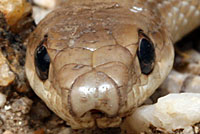 |
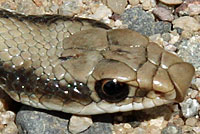 |
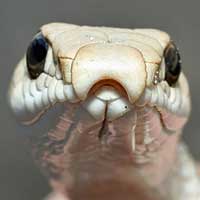 |
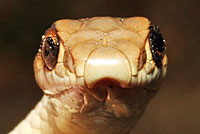 |
|||
| Desert Patch-nosed Snake | Mohave Patch-nose Snake | Coast Patch-nosed Snake |
||||
 |
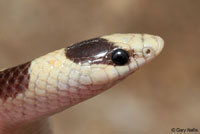 |
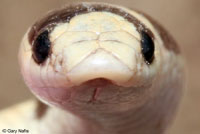 |
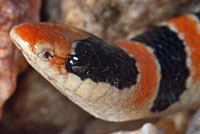 |
|||
| Texas Patch-nosed Snake |
Mohave Shovel-nosed Snake |
Colorado Desert Shovel-nosed Snake Shovel-nosed snakes have an elongated head which help them to burrow to find food. |
||||
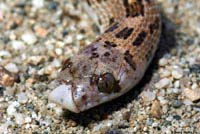 |
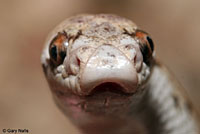 |
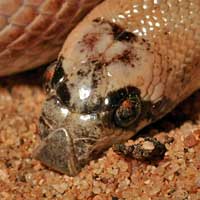 |
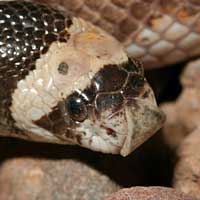 |
|||
| Spotted Leaf-nosed Snake | Spotted Leaf-nosed Snake | Saddled Leaf-nosed Snake |
Saddled Leaf-nosed Snake | |||
 |
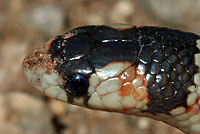 |
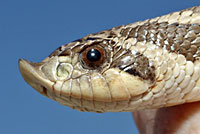 |
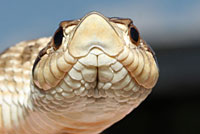 |
|||
| Chihuahuan Hook-nosed Snake |
Thornscrub Hook-nosed Snake | This Mexican Hog-nosed Snake has an enlarged scale on its nose to assist it in burrowing. When handled, the snake will sometimes poke the handler with its snout, using it as a weapon, although it is not sharp enough to do any damage. | ||||
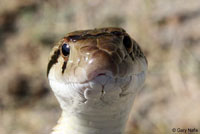 |
||||||
| Gophersnakes also have a slightly enlarged rostral scale. | ||||||
| Some snakes also have elongated noses and some have specialized jaws to help catch prey. | ||||||
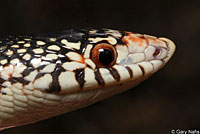 |
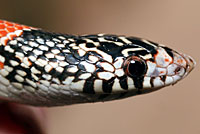 |
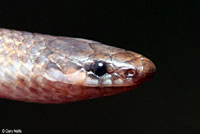 |
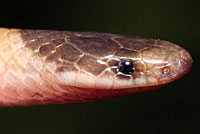 |
|||
| Long-nosed Snake | Long-nosed Snake | Flat-head Snake |
Plains Black-headed Snake |
|||
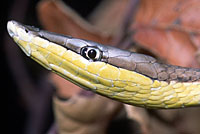 |
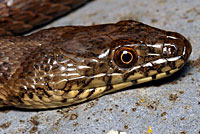 |
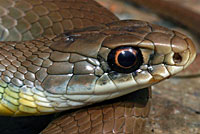 |
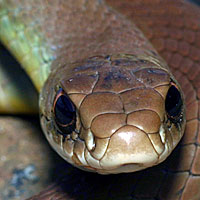 |
|||
| The Brown Vinesnake spends much of its time in trees hunting lizards. It has an elongated head, a thin body and a color and pattern that all together make it look like a branch so it cannot be easily detected by sight. |
The Narrow-headed Gartersnake has an elongated head with elevated eyes, adaptations which help it to catch fish. | North American Racers have a slightly elongated tapered snout and large eyes. | ||||
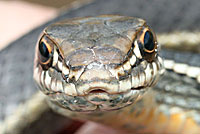 |
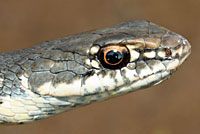 |
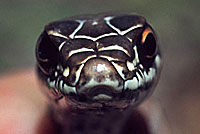 |
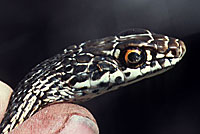 |
|||
| The Striped Racer has an elongated tapered snout and large eyes that can see directly ahead around the snout to increase the accuracy of its vision when hunting. | The Striped Whipsnake also has an elongated snout and large eyes. | |||||
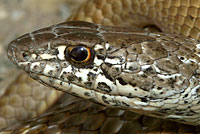 |
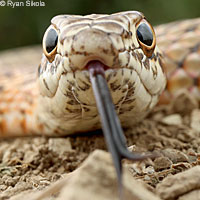 |
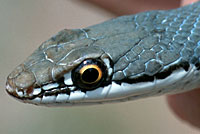 |
||||
| Coachwhips have an elongated and tapered head and snout. © Ryan Sikola | Sonoran Whipsnake | |||||
Snake Tails |
||||||
Some snakes have developed specialized tails. |
||||||
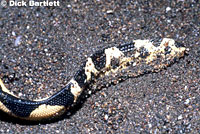 |
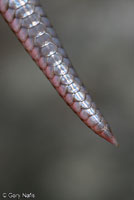 |
 |
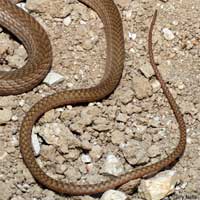 |
|||
| The tail of the Yellow-bellied Sea Snake is flattened from side to side to act as an oar which helps this aquatic snake swim through the ocean. © Dick Bartlett |
Eastern Worm Snake | Sharp-tailed Snake | Racers, Whipsnakes, Patch-nosed Snakes, and Coachwhips are diurnal snakes that rely on speed to catch equally speedy prey such as lizards. Their long thin whip-like tails help them to crawl at amazing speeds. This is the tail of a San Joaquin Coachwhip which looks something like a braided whip that was once used to whip the horses that pulled a coach. | |||
 |
||||||
| When threatened, Northern Rubber Boas will often roll into a ball, hide their head and elevate the tip of their tail to fool a predator into attacking the tail which looks somewhat like a head. The tail is less-vulnerable than the head and can withstand attacks without much damage. Some boas have many scars on the tail from this tactic. | ||||||
| Rattles | ||||||
The most famous snake tail modification is the rattle on the tail of a rattlesnake. This rattle makes a warning sound when the snake shakes it back and forth rapidly. |
||||||
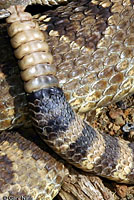 |
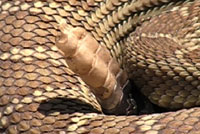 |
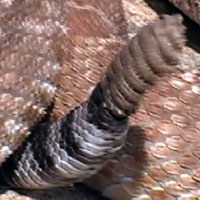 |
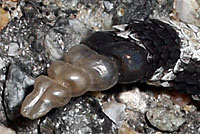 |
|||
| Northern Pacific Rattlesnake | This short video shows a Northern Pacific Rattlesnake shaking its rattle. | This video shows a close view of a Red Diamond Rattlesnake shaking its rattle. | Sidewinders, such as this Colorado Desert Sidewinder, are small rattlesnakes with small rattles. |
|||
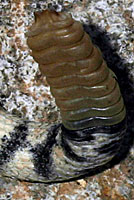 |
 |
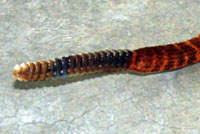 |
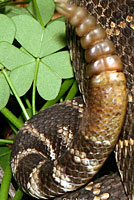 |
|||
| Southwestern Speckled Rattlesnake | The Arizona Ridge-nosed Rattlesnake is a small montane rattlesnake with a tiny rattle. | The Tiger Rattlesnake is known for its large string of rattles. | Southern Pacific Rattlesnake | |||
 |
 |
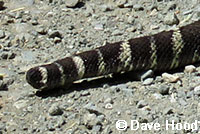 |
||||
| Sometimes the rattles on a rattlesnake's tail will break off, but the Isla Catalina Rattlesnake does not have a rattle. It is found only on Isla Catalina off the Coast of Baja California in the Gulf of California. |
This adult Northern Pacific Rattlesnake from San Mateo County is missing its rattles. It appears that the end of its tail has been somehow cut off. This is extremely rare, but it proves the importance of recognizing the pattern, body shape, and head shape of the rattlesnakes in your area, because you can't always identify a rattlesnake just by the rattle at the end of the tail. © Dave Hood |
|||||
Snake Eyes |
||||||
Blind Snakes, now called Threadsnakes, spend most of their time living underground in dark places where vision is not helpful, so they have lost the ability to see. They have only nonfunctioning dark spots where their eyes should be, called vestigial eyes. |
||||||
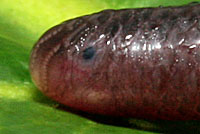 |
 |
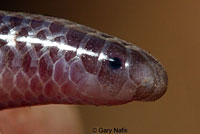 |
||||
| Brahminy Blind Snake |
Southwestern Threadsnake |
|||||
Racers, Whipsnakes, and Coachwhips are fast-moving diurnal predators with eyes set on a narrow head with a pointed nose. This gives them the ability to see forward with both eyes so they can more easily focus on their fast-moving prey. |
||||||
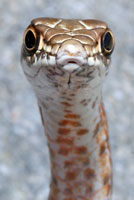 |
 |
 |
||||
| San Joaquin Coachwhip | California Striped Racer (Whipsnake) | Western Yellow-bellied Racer | ||||
Nocturnal snakes have a variety of types of eyes to help them see in the dark. Some have small eyes, others have large eyes, and some have vertical pupils. |
||||||
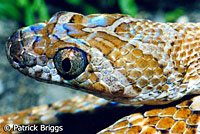 |
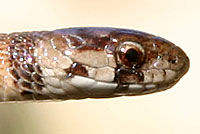 |
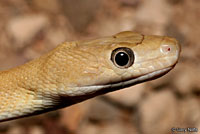 |
||||
| Baja California Lyresnake | Texas Brownsnake |
Trans-pecos Ratsnake |
||||
Many species of snakes have eyes with vertical pupils, including rattlesnakes. Vertical pupils are common in ambush predators, providing them with better hunting focus, and horizontal pupils are common in prey animals, providing them with wider vision. |
||||||
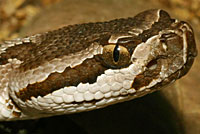 |
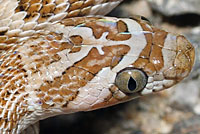 |
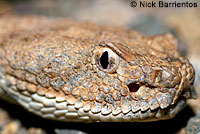 |
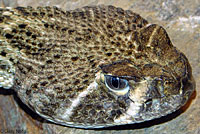 |
|||
| Southern Pacific Rattlesnake | Baja California Lyresnake | Southwestern Speckled Rattlesnake © Nick Barrientos |
Western Diamond-backed Rattlesnake | |||
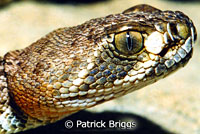 |
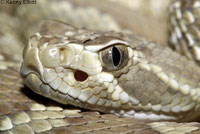 |
 |
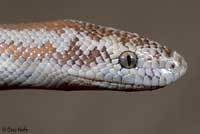 |
|||
| Red Diamond Ratttlesnake © Patrick Briggs |
Northern Mohave Rattlesnake © Kenny Elliott |
Northern Rubber Boa | Desert Rosy Boa | |||
| Eyes Ready to Shed | ||||||
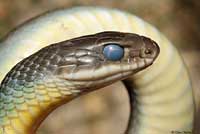 |
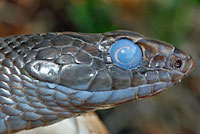 |
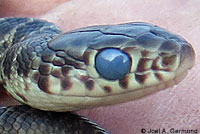 |
||||
| Snake eyes get cloudy when they are about to shed, as this Western Yellow-bellied Racer is about to do. |
The milky eye of this Eastern Coachwhip, which is close to shedding its skin, shows why snakes in this pre-shed condition are called "blue" or "in the blue." | This juvenile Western Yellow-bellied Racer shows the milky eye of a snake about to shed its skin. © Joel A. Germond |
||||
Return to the Top
© 2000 -
